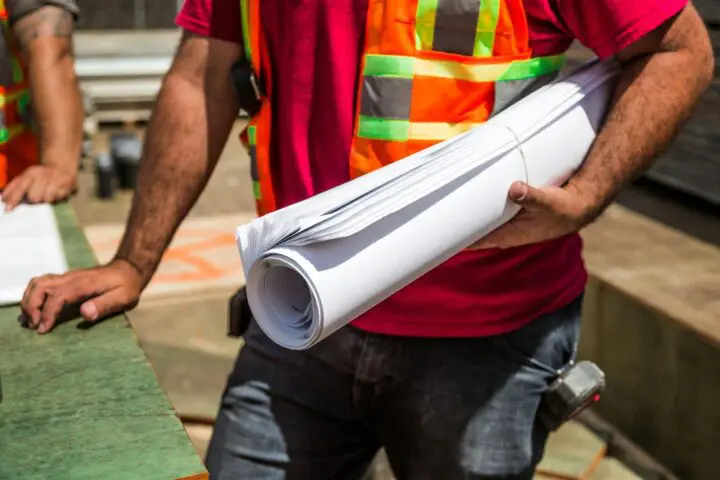LegaLine POV: Key Factors in Developing an Internal Risk Management Process
From choosing your client to closing a project, your firm can take measured steps towards managing its risk.
Text
From choosing your client to closing a project, your firm can take measured steps towards managing its risk. While unpleasant, the terms “insurance” and “litigation” have taught us how to better protect design firms by minimizing claim potential, or at least to develop stronger defenses if claims cannot be avoided.

Internal risk management is key to a successful practice. Consistency in processes and standards as well as an eye toward the detailed builds a stronger team and increases efficiency. Consider the following in managing risks:
- Client Selection: Does your client seem reasonable and easy to work with? Does your client have the skills and experience to see the project through to completion, handle unexpected changes in scope in the interim, or make reasonable budgetary decisions when needed? Is the client receptive to negotiating the contract? How reasonable are your client’s expectations and goals? Recognizing red flags at the outset will assist in mitigating against potential problems which may arise as the project progresses or will assist in deciding that a particular project’s risks outweigh the potential gain and steer you clear of future headaches.
- Clearly-Written Proposals: Proposals should include a clearly-defined scope, including exclusions and assumptions, with a good amount of detail. Use your past experience and your knowledge of your client to consider fees, budgets, delivery method, and timing of services and construction. Also consider whether you will need to utilize the expertise of subconsultants. Proposals should be reviewed by qualified personnel for consistency and accuracy. If standard terms and conditions are used, those should be tailored as necessary depending on the job and the client. Should the proposal ultimately become incorporated into a contract, the controlling terms should be clearly identified.
- Favorable Contracts: Having consistency in your contract terms resonates well in the event of a claim, and creates efficiency in the contracting phase. For this, it is best to have a process for reviewing contracts including identifying the person or limited persons who will review contracts. This aids consistency. Maintain a standard list of contract deal breakers and deal makers to be used when negotiating and evaluating a contract. Sign the contract, preferably before you commence services. When you have a subconsultant, make sure your subconsultant agreement aligns with the prime and addresses any pass-through responsibilities or scope. Educate members of your team as to the terms and standards established by your firm’s contracts both for professional development as well as to strengthen your firm’s leverage. Your team should understand the scope, schedule, deliverables, budgets, responsibilities of each party and other procedural nuances addressed in the contracts.
- Project Start-Up and Documentation: A strong firm administrator serves to maintain a project file that is complete, consistent, and organized. Setting up a new project, effectively storing data, controlling accounts receivable, and staying apprised of budgets and staffing are all essential tasks for an administrator that serve to create leverage and strengthen defenses for a claim down the road. Document all key meetings and presentations, any recommendations made, decisions reached, or follow-up required. For larger projects with multiple parties, publish minutes and distribute.
- QA/QC: A Quality Assurance/Quality Control manual serves a design firm well. A well-considered QA/QC program fosters consistency with firm standards, and if followed, can be a helpful tool in defending a claim. The project manager or designated QC Coordinator must perform the checks and balances as to responsibilities of the project team, pursuant to the firm’s contract and industry standards. Hand in hand with this effort is education and training of team members to be sensitive to project risks in order to reinforce the firm’s quality program. Team members should understand their clearly-defined roles and responsibilities as well as the expectations of the internal team, subconsultants and other parties involved in the project delivery.
- Closeout: At close-out, the designated team members should review project performance and budgets and consider updating procedures and protocols as necessary for the next project. Documents and data should be collected, culled and stored pursuant to an established document retention program.
No one can promise your firm will not be sued. Consider the foregoing as a wish list from your insurer and counsel with experience in defending claims on behalf of design professionals. Establishing sound internal risk management will assist your firm in maintaining a high quality of performance and serve as a shield to attacks based on claims of negligence. This investment may, in fact, save you time, money, and heartache for years to come.
By: Jacqueline Pons-Bunney, Esq.
W&D [1]: W&D has offices in Southern and Northern California, Nevada, Arizona and Colorado.
AUTHOR’S CONTACT INFO
Arizona Office (602) 971-0159
California Office (949) 837-8200
Colorado Office (720) 279-7624
jpbunney@wdlaw.com www.wdlaw.com
[1] W&D Law, LLP is one of the nation’s largest 100% female-owned law firms, with offices in Southern California, Northern California, Nevada, Arizona and Colorado. W&D Law, LLP attorneys support Practice Coach, an AIA Trust service that provides legal information crucial for the business of architecture. Practice Coach is a subscription service available to AIA Members and Components.
The views expressed in this paper are those of the author and do not necessarily reflect the views of AIA Trust. This paper is for general informational purposes only. The author makes no warranty, guarantee, or representation as to the accuracy or sufficiency of any such information. The author assumes no liability to any party for damages arising out of or in connection with the implementation of any recommendations suggested in this paper.
More on Legal & Risk & Small Firms

LegaLine
Legal ▪ Professional Practice ▪ Risk ▪ Small Firms
Employee Benefits Help Maintain Firm Success
Firm Management ▪ Life & Health ▪ Small Firms ▪ Article ▪ Newsletter
Who Owns the Instruments of Service?
Contracts ▪ Professional Liability ▪ Professional Practice ▪ Small Firms ▪ Article